Greenhouse Gardening in the Cold Season – Winter’s Secret Garden
Stepping through the frosted doorway, one is immediately enveloped by the earthy scent of soil and the vibrant hues of flourishing plants. Outside, the world lies dormant under a thick blanket of snow, but inside this greenhouse, life persists against the odds.
Winter often carries with it a sense of stillness, a pause in the natural world’s relentless cycle. Yet, hidden within glass walls and beneath protective roofs, a quiet revolution is taking place. Greenhouse gardening during the coldest months is transforming how we perceive and interact with the dormant season. It’s a practice that combines age-old techniques with modern innovations, allowing gardeners to cultivate abundance when the world outside seems inhospitable.
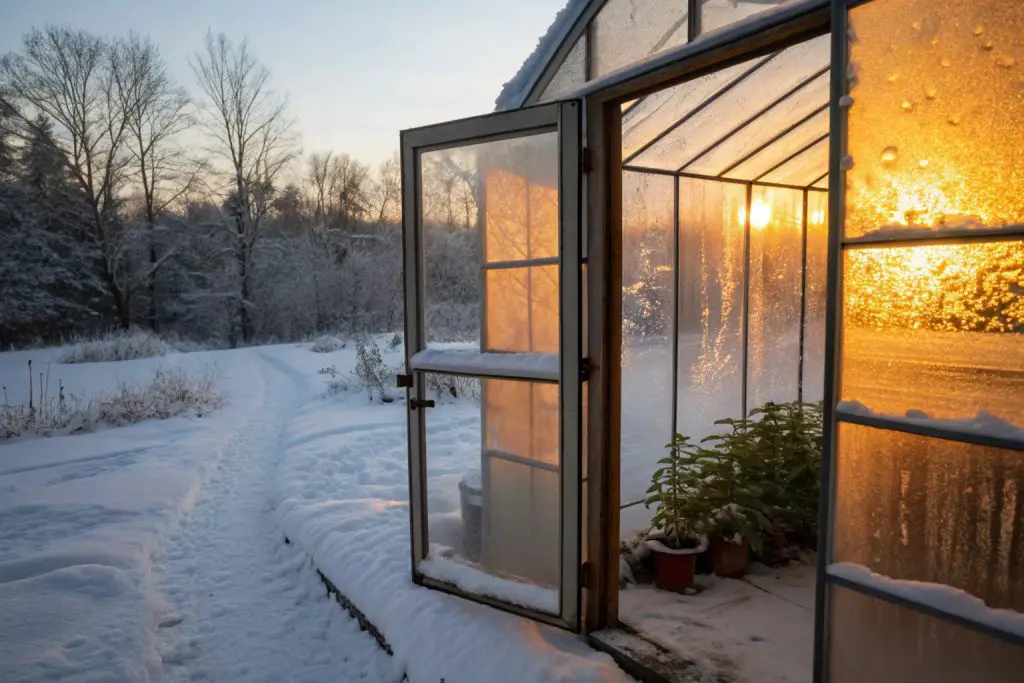
The Allure of the Winter Greenhouse
The concept of nurturing plants through the chill of winter is not a modern invention. Ancient Roman glasshouses, though rudimentary, enabled the cultivation of exotic fruits beyond their natural seasons. Centuries later, Victorian conservatories became architectural marvels, housing tropical plants and symbolizing both wealth and scientific curiosity. These structures were more than mere shelters for plants; they were testaments to human ingenuity and our desire to conquer nature’s limitations.
In recent years, there’s been a resurgence of interest in greenhouse gardening during winter. This renewed enthusiasm stems from a growing awareness of sustainable living and the benefits of year-round cultivation. Gardeners across the globe are rediscovering the joys of harvesting fresh produce in January and tending to vibrant blooms when the landscape outside is monochrome. For many, the greenhouse becomes a sanctuary—a place where one can immerse in the nurturing process, find solace from the bleakness outside, and reconnect with the rhythms of growth.
Preparing Your Greenhouse for Winter
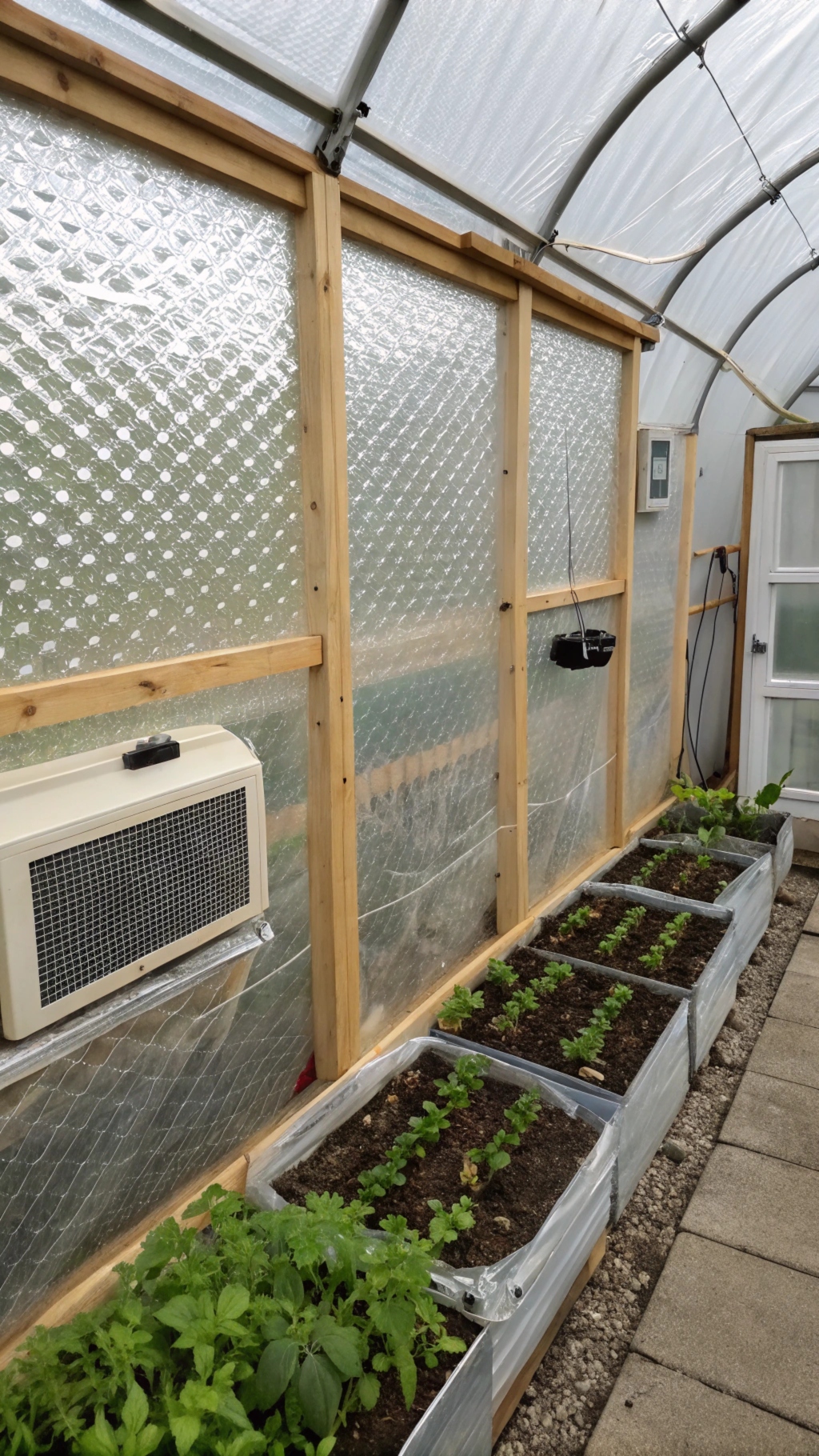
Transforming a greenhouse into a winter haven requires thoughtful preparation. Insulation becomes paramount as temperatures drop. Bubble wrap, a surprisingly effective insulator, can be applied to the interior walls, trapping heat while still allowing light to filter through. Thermal screens, which can be drawn over plants during the coldest nights, add an extra layer of protection. Ensuring that all gaps are sealed prevents drafts that can undermine these efforts.
Heating is another critical consideration. Options range from electric heaters with thermostatic controls to gas heaters and even solar-powered systems for the environmentally conscious. Each method has its advantages and cost implications. For those seeking cost-effective solutions, passive heating techniques, such as incorporating thermal mass with water barrels or stone floors that absorb and slowly release heat, can make a significant difference.
Light, the essential ingredient for photosynthesis, is scarce during winter’s short days. Maximizing natural light involves strategic placement of plants and keeping the greenhouse clean to allow maximum light penetration. Supplemental lighting, such as LED grow lights, can compensate for the lack of sunlight, ensuring plants receive the necessary spectrum and intensity to thrive.
Ventilation and humidity control remain important even in winter. While the instinct might be to seal the greenhouse completely, plants still require fresh air circulation to prevent mold and mildew. Ventilation systems, whether manual vents or automated fans, help maintain a balance, reducing the risk of disease.
Selecting the Right Crops: What to Grow in a Greenhouse in Winter
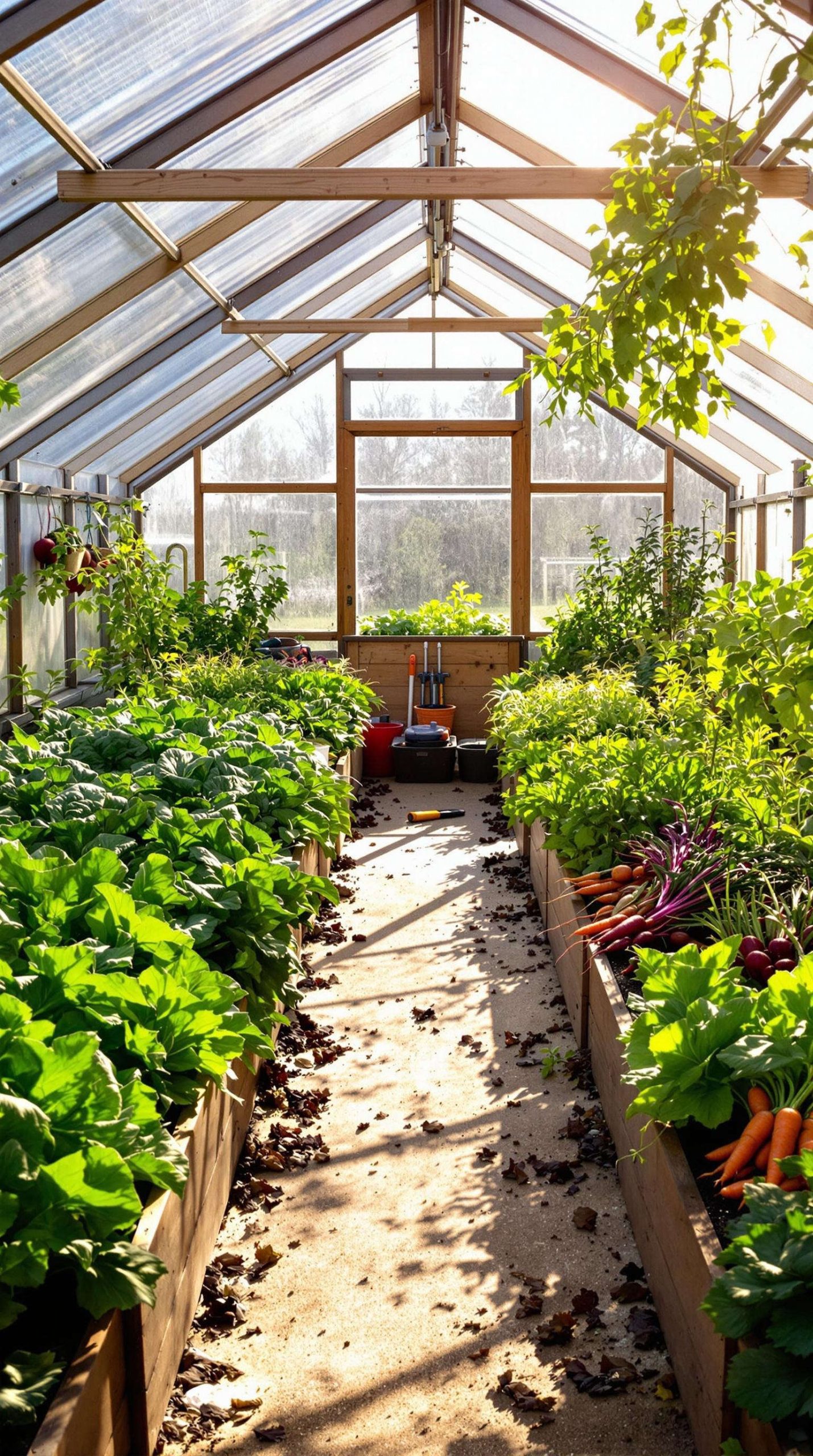
Choosing plants suited to cooler temperatures is key to a successful winter harvest. Leafy greens like spinach, kale, and Swiss chard are remarkably resilient, flourishing in conditions that would halt more delicate species. Root vegetables such as carrots, radishes, and beets also adapt well, their growth sustained by the moderated climate within the greenhouse.
Herbs, often thought of as summer staples, can continue to provide fresh flavors throughout the winter. Parsley, cilantro, and chives don’t mind the cooler air and can be a delightful addition to winter meals. For the adventurous gardener, cultivating citrus trees or tropical plants is possible with the right heating and lighting—imagine plucking a ripe lemon from your own tree while snow falls outside.
Curating a selection of the best winter greenhouse plants involves understanding not just their temperature tolerances but also their light requirements and growth habits. A harmonious greenhouse balances the needs of various plants, creating a mini-ecosystem that supports diversity and productivity.
Techniques for Successful Winter Growing
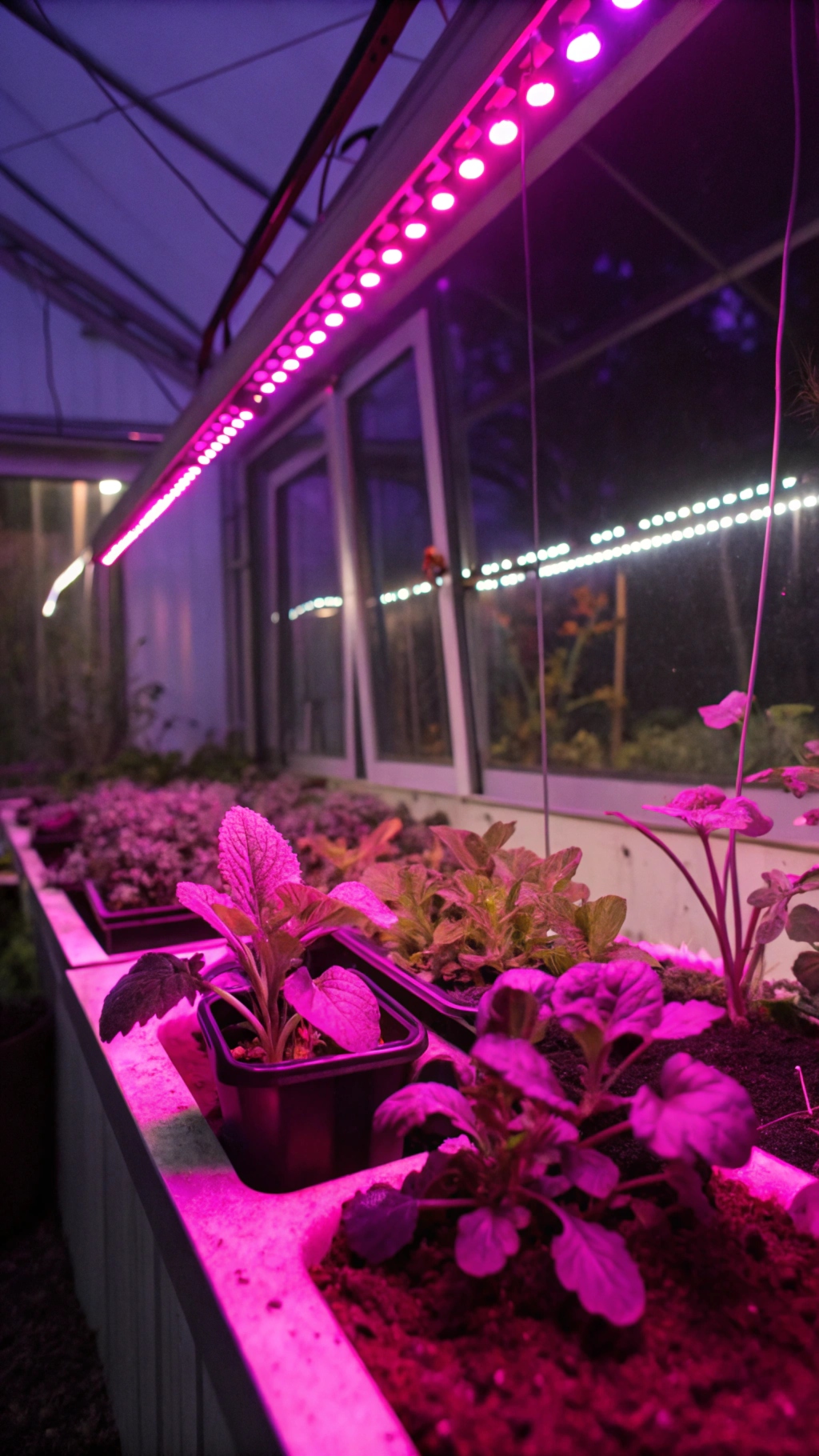
Soil management takes on new importance when temperatures drop. Maintaining soil warmth can be achieved by using raised beds, which elevate the root zone and can be insulated underneath. Adding organic matter not only enriches the soil but also generates a small amount of heat as it decomposes. Some gardeners employ thermal mass techniques, incorporating materials that absorb and retain heat to keep soil temperatures stable.
Watering practices must adapt to winter conditions. Plants generally require less water due to reduced evaporation and slower growth rates. Overwatering can lead to root rot and other issues. Drip irrigation systems offer precise control, delivering moisture directly to the root zone and minimizing excess humidity in the greenhouse air.
Pest and disease prevention remains a concern, even in the colder months. Aphids, whiteflies, and other pests can find refuge in the warm environment of a greenhouse. Regular inspections and organic remedies, such as introducing beneficial insects or using neem oil, help keep populations in check. Integrated pest management strategies focus on prevention and minimal intervention, promoting a healthy balance.
DIY Winter Greenhouse Gardening
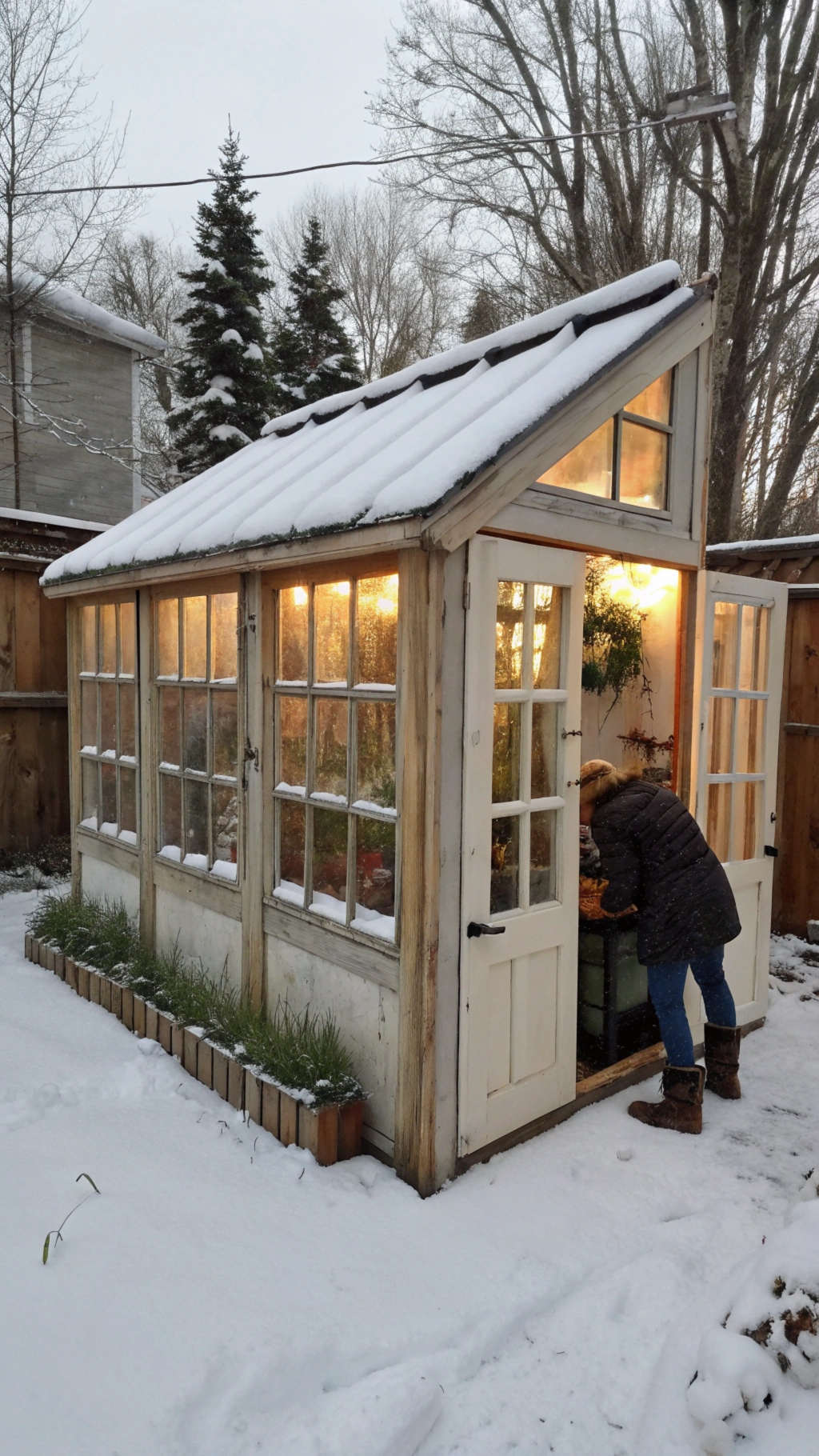
For many gardeners or DIY enthusiasts, building a winter greenhouse is a project that combines practicality with personal expression. Material choices range from traditional glass to modern polycarbonate panels, each offering different benefits in terms of insulation, durability, and cost. Designs can be tailored to fit available space and budgets, from small lean-to structures attached to a house to standalone greenhouses with intricate ventilation and heating systems.
Retrofitting existing structures is an option for those looking to minimize costs or make use of what’s already available. Porches, sheds, or simple hoop houses can be converted for winter use with added insulation and heating elements. Creative solutions, like using reclaimed windows and/or doors, not only reduce expenses but also add character to the greenhouse.
Cost-saving tips abound in the DIY community. Upcycling materials reduces waste and expense. Energy-efficient practices, such as using timers for lights and heaters or employing passive solar designs, lower ongoing costs. Community resources, including shared tools or cooperative purchasing of supplies, make greenhouse gardening more accessible.
How to Grow in a Greenhouse in the Winter: Step-by-Step Guide
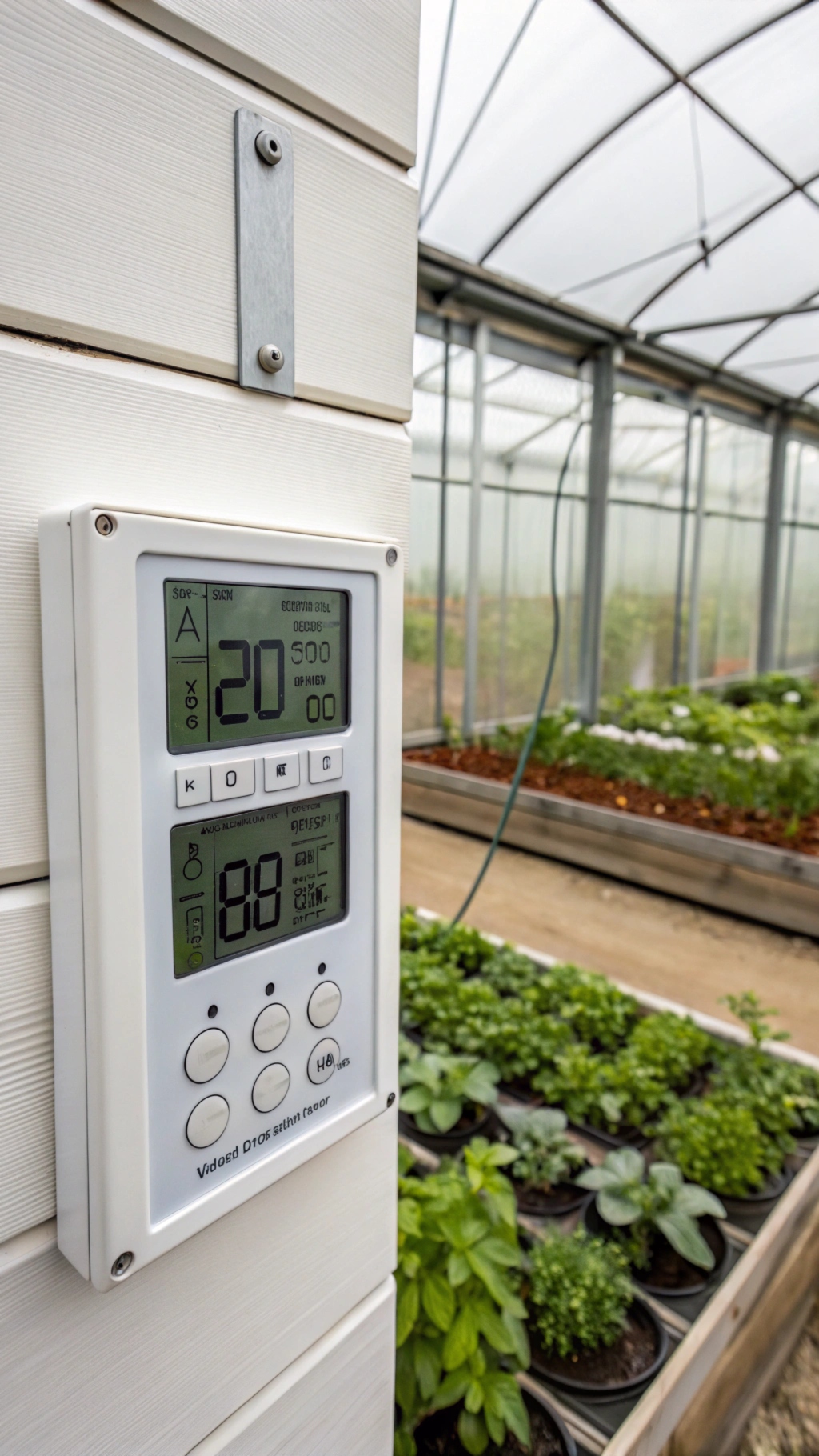
Planning is the foundation of any successful garden, and this is especially true in winter. Scheduling planting times requires knowledge of each crop’s growth rate and ideal conditions. Crop rotation prevents soil depletion and reduces the risk of disease. Companion planting can enhance growth and deter pests, creating symbiotic relationships among plants.
Daily maintenance routines involve monitoring temperature and humidity levels, adjusting ventilation and heating as needed. Recognizing signs of plant stress—such as yellowing leaves or slowed growth—allows for prompt intervention. Small issues can escalate quickly in the enclosed environment of a greenhouse, so vigilance is essential.
Harvesting in winter carries its own set of best practices. Gentle handling of plants, especially in colder temperatures, preserves their health. Some crops, like leafy greens, benefit from cut-and-come-again harvesting, which encourages regrowth and extends the productive season. Proper storage of surplus produce ensures that the fruits of your labor can be enjoyed long after they’ve been picked.
Greenhouse Gardening for Beginners in Winter
Starting a winter greenhouse can seem intimidating, but many gardeners have found success by starting small and learning as they go. Addressing common challenges, such as concerns about cost or time commitment, helps demystify the process. Stories from novice gardeners highlight the rewards and learning opportunities that come with this endeavor.
Numerous resources are available to support beginners. Books and online guides provide detailed information, while workshops and classes offer hands-on experience. Connecting with local gardening communities or clubs can provide mentorship and camaraderie. The shared passion for growing transcends experience levels, fostering an environment where knowledge and enthusiasm are freely exchanged.
The Environmental and Personal Benefits
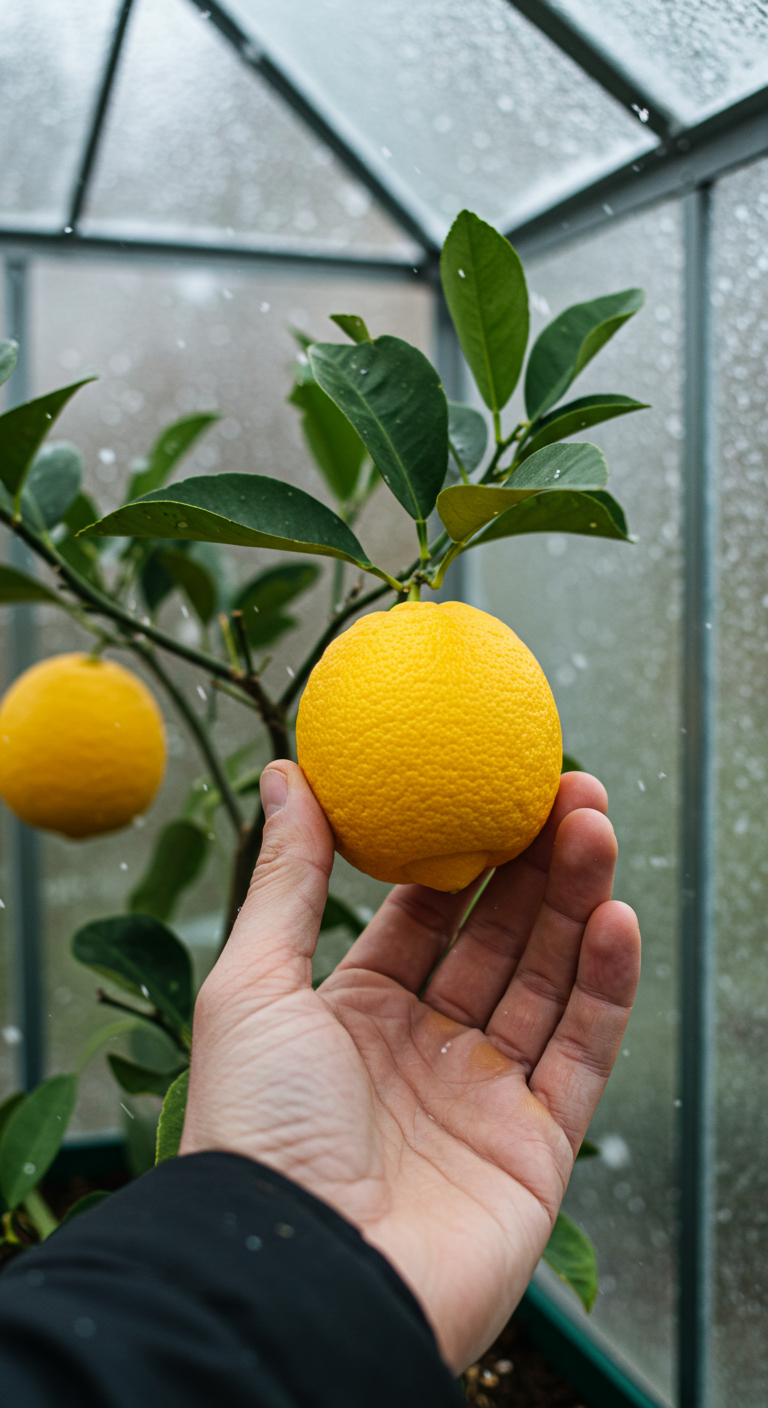
Greenhouse gardening in winter contributes to sustainable living by reducing reliance on transported produce. Growing food locally, even on a small scale, lowers carbon emissions associated with long-distance transportation and packaging. It also enhances food security, providing access to fresh, nutritious food when supply chains might be disrupted.
On a personal level, tending to a garden during the bleak months offers mental and physical benefits. The act of nurturing plants promotes mindfulness and reduces stress. Physical activity involved in gardening keeps the body engaged. There’s a unique joy in witnessing growth and vitality amidst the dormancy of winter—a reminder of resilience and the cycles of life. If this is not enough the pleasure in being able to enjoy cooking and eating produce you have grown makes the process doubly wortyhwhile.
The Future of Winter Greenhouse Growing
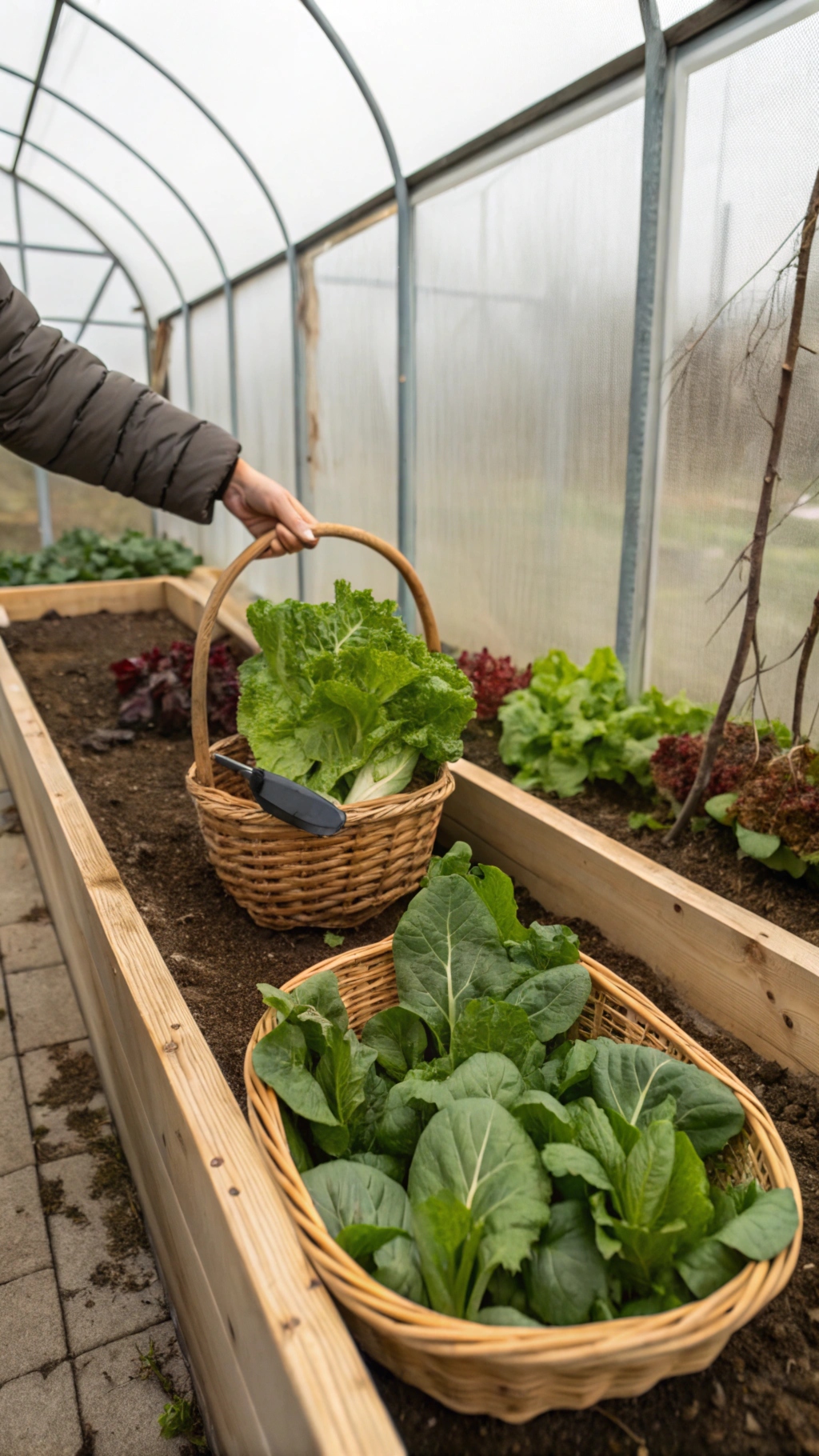
Advancements in technology are poised to revolutionize winter greenhouse gardening. Smart greenhouses equipped with automated climate control systems adjust temperature, humidity, and lighting based on real-time data. These innovations reduce manual labor and optimize conditions for plant growth, making greenhouse gardening more efficient and accessible.
Urban applications are expanding the reach of winter gardening. Rooftop greenhouses utilize otherwise unused space to produce food within city environments. Community greenhouse projects address issues of urban food deserts by providing fresh produce to neighborhoods lacking access to healthy options. These initiatives also foster community engagement and education around food production.
Hydroponics and aquaponics present alternative methods for winter cultivation, using water-based systems to grow plants without soil. These techniques can increase yield while reducing resource usage. As technology continues to evolve, the possibilities for winter greenhouse gardening will only expand.
Last Thoughts
Returning to that initial moment—stepping into a warm, vibrant greenhouse while winter rages outside—the magic of this practice becomes clear. It’s more than just a hobby or a means to an end; it’s a testament to human creativity and our intrinsic connection to nature. Cultivating a winter greenhouse, regardless of its size, offers a blend of scientific challenge and artistic expression.
For those considering this path, the rewards are manifold. The experience enriches not just the table with fresh produce but also the soul with a sense of accomplishment and harmony with the natural world. In the quiet of winter, the greenhouse stands as a beacon of life and a symbol of what is possible when we align knowledge, passion, and respect for the environment.
